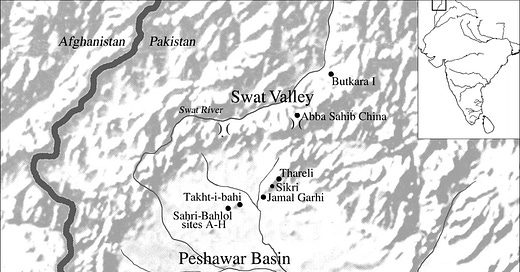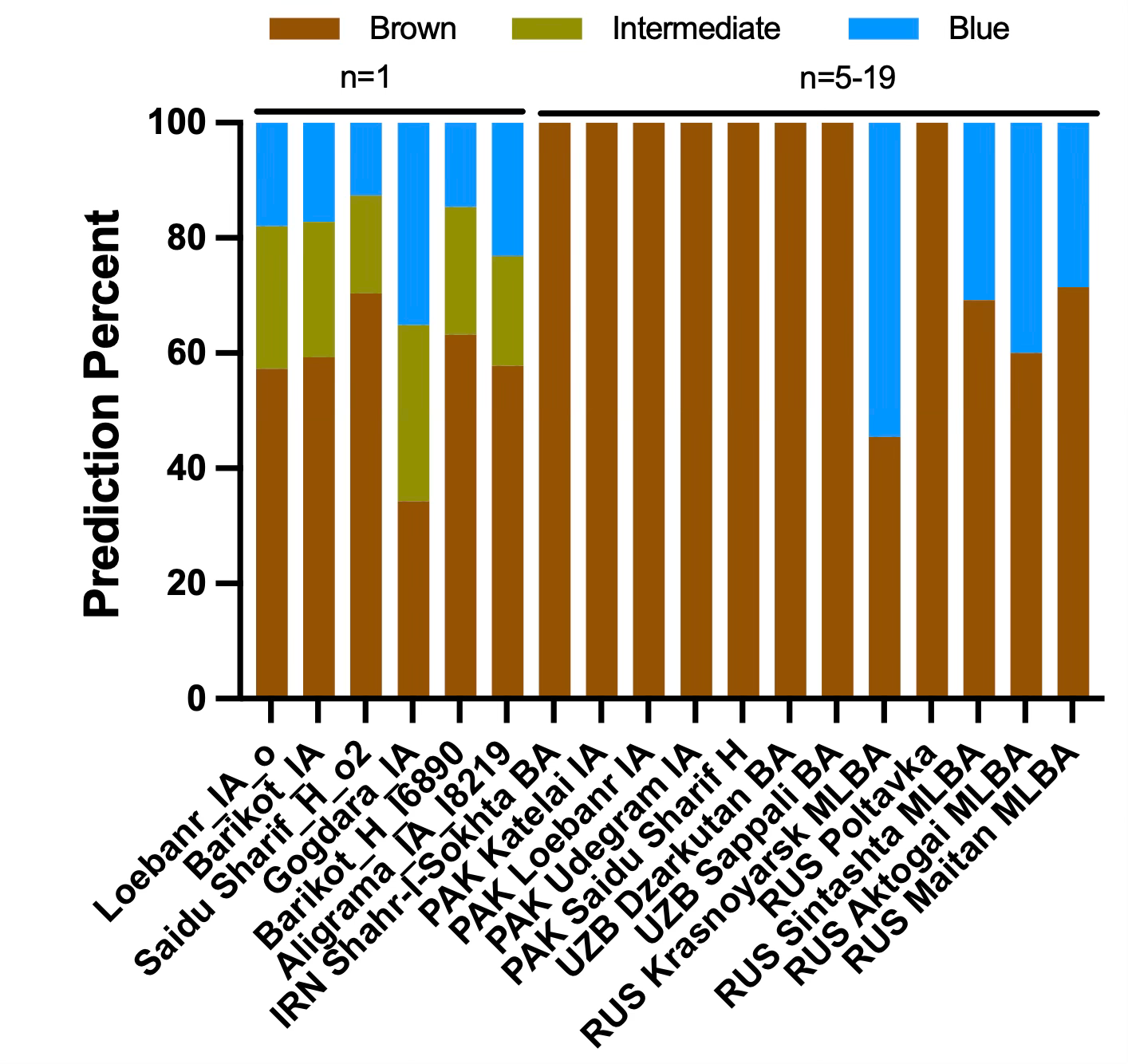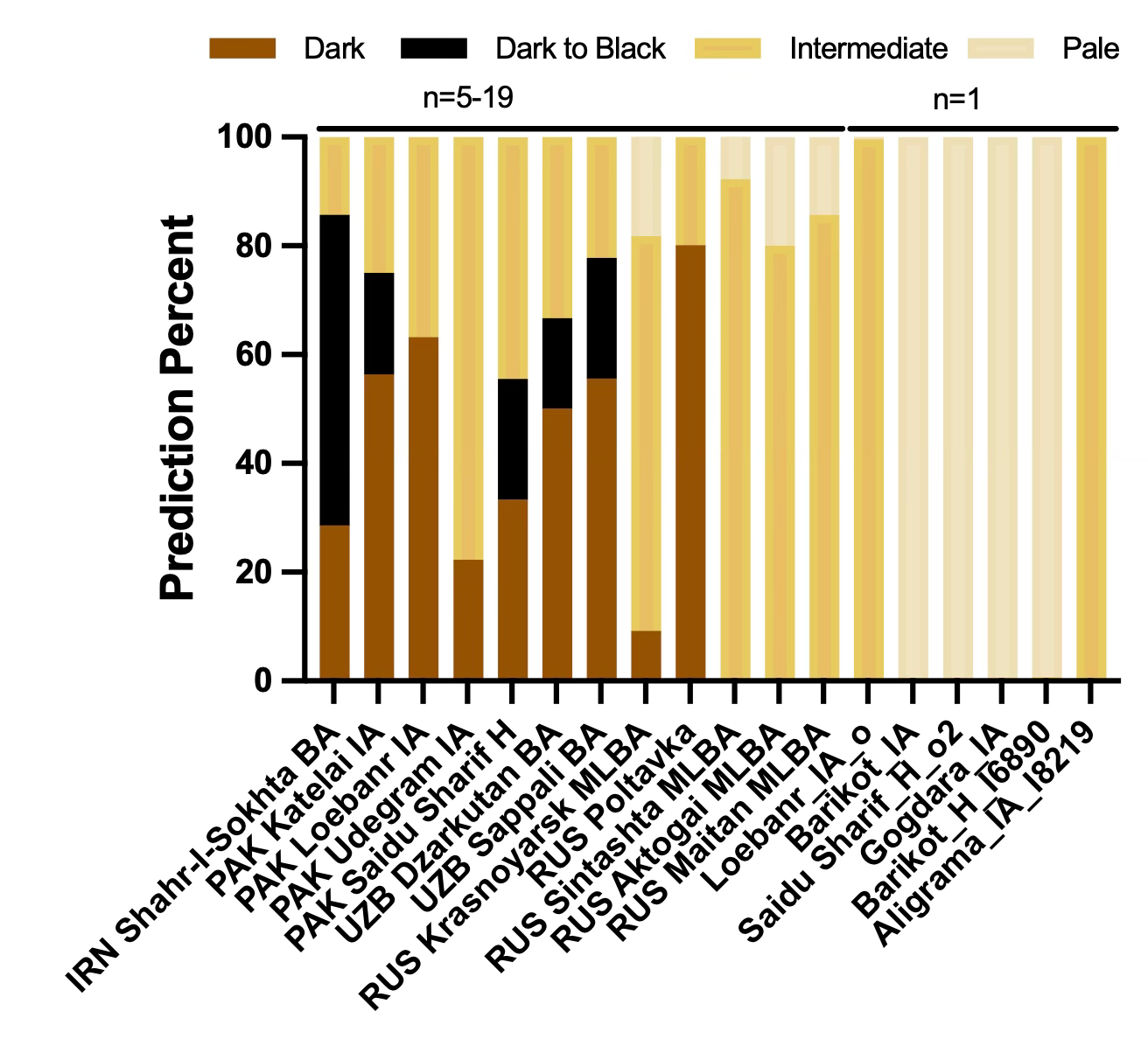In 2019, a landmark study by Reich Lab at Harvard probed key questions in human population history of South Asia using genomic samples from diverse sociolinguistic people groups of Indian Subcontinent. They managed to retrieve ancient DNA (aDNA) from hundreds of individuals buried in Bronze Age and Iron Age sites in Central Asia, Iran and Pakistan. Consequently, they concluded a tripartite model of genetic admixture for ancient and modern populations of Indian subcontinent which included ancestry related to earliest farmers of ancient Iran, Hunter gatherers South Asia and nomadic pastoralists from steppe lands of Eastern Europe. They did not however address conclusively what these people looked like (unlike aDNA publications from Europe).
Skeletal reconstruction:
These ancient Swat samples were collected from people buried in sites belonging to Gandhara Grave culture GGC with specific burial tradition including inhumation, multiple burials in the same grave, pot burials and partial or full cremation. While they were not genetically much different from each other; carrying largely same three components of ancestry described above; they were physically divided based on skeletal remains into largely four categories based on cephalic indices suggesting GGC might have represented a physically diverse population with a fraction similar to ancient Harappans, as gleaned from the skeletal remains from Timargarha in Dir.
Recently, a skeletal reconstruction was performed by the team at Ancestral Whispers of two of the randomly selected skulls from the Timargarha in an effort to bring to life the ancient peoples of Dir, Khyber Pakhtunkhwa.
Here is the “anthropological description explaining the methodology behind the team's reconstructions:
Skull #101a
Based on the anthropological analysis of skull number 101a given in "View of Human Skeletal Remains from the Cemetery of Timargarha", it is identified as a female aged over 60. The square eye orbits suggest an absence of an epicanthic fold, while the overall large orbits and weakly developed supraorbital ridge indicate a tendency for slight sagging of the skin around the eyes, particularly in advanced age. The midface exhibits some damage, revealing a narrow maxilla with minimal forward protrusion, resulting in closely set nasolabial folds, a non-narrow mouth, and a characteristic bite associated with elderly individuals. A reasonably protruding nasal bridge and a downward sagging nasal tip are very likely displayed. The face is low and broad, allowing ample space for sagging skin around the cheek area in old age. The mandible is robust, square, and characterized by a strong forward protrusion.
Skull #101c
Based on the anthropological description provided in "View of Human Skeletal Remains from the Cemetery of Timargarha," skull number 101c is identified as a male aged approximately 30-35 years. The cranium exhibits a narrow and elongated structure, the face, which is visually broad, surpasses the overall cranial breadth. The slightly rounded eye orbits feature a subtle recession around the edges, creating a nuanced appearance of eye hoods. The nose presents an overall narrow structure. Additionally, there is a noticeable degree of prognathism, resulting in a slightly forward protrusion of the mouth. The chin demonstrates a slight recession followed by a protrusion at the end.
Pigmentation ranges are within those of contemporary inhabitants of Pakistan.”
Prediction of complex genetic physical traits:
Ancient people of Gandhara by 1200-800 BC (Iron Age), similar to modern people of Pakistan, were likely physically diverse as well. aDNA can give us clues about some of the physical features of ancient humans of Indian Subcontinent, i.e. hair color, eye color and skin pigmentation. Of course, these are approximations based on population averages, and at individual level, there is much more complexity as one might imagine. Complex traits like height and pigmentation are not inherited via a single gene and can only be predicted based on the presence of certain genetic variation in your DNA called SNPs that vary person to person.
Overall, most Iron Age inhabitants of Swat part of GGC were predicted to have brown eye color, however, there did exit individuals in small fractions that were predicted to have either blue or intermediate eye color (green or hazel etc). This trait did not exit among the bronze age inhabitants of South and Central Asia and likely arrived by late Bronze Age and Iron Age into the region from steppe lands of central Eurasia (Kazakhstan).
Similarly, a fraction of inhabitants of Indus Valley region, as gleaned from migrant burials from Shahr-i-Sokhta, Iran, were likely dark pigmented. Iron Age inhabitants of Swat however, were comparatively lightly pigmented (intermediate) with a small percentage of pale skin tones predicted via Hiris-Plex.
While cranial measurements are not exactly predictive of genetic variation, recent advances in aDNA retrieval and analysis along with lowering cost of whole genome sequencing has opened a new avenue of answering questions about ancient human history. Hence, we can predict an increase in genetic diversity in population of Gandhara in the first millennium BC ushering the second urbanization. This is reflected in the diversity of human population of contemporary Pakistan.
References:
1: Bernhard, W., (1967) “Human skeletal remains from the cemetery of Timargarha,” Ancient Pakistan, Volume 3.
2: Narasimhan, et al, (2019) “Formation of human population of South and Central Asia,” Science, Volume 365, Issue 6457.
3: Lazaridis, et al, (2022) “Genetic history of the Southern Arc: A bridge between West Asia and Europe,” Science, Volume 377, Issue 6609.








